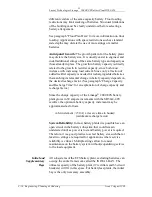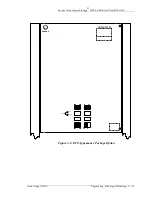
Lucent Technologies Lineage
®
2000 ECS Battery Plant H569-416
3 - 10 Engineering, Planning & Ordering
Issue 2 August 1996
•
At least one on-line spare rectifier must be included in the
plant for increased reliability.
•
Any on-line spares must be the same size as the largest
rectifier size in the plant.
•
At least 20 percent additional capacity must be included in
the plant to provide recharge capacity and spares.
The actual selection of rectifiers depends on their sizes.
Different sizes of rectifiers are available in some types of battery
plants, and rectifier sizes may be mixed within one plant. Refer
to paragraph “Rectifier Sizing” for specifics on sizes and
quantities of rectifiers for the ECS Battery Plant.
Battery String
Voltage Drop
and Balancing
The rectifiers maintain a constant voltage at the battery plant bus
bars while recharging or floating the batteries. There is a finite
voltage drop from the charge bus bars inside the ECS bay to the
battery string terminals as batteries draw recharge current after a
discharge. This voltage drop is proportional to the magnitude of
the recharge current. Any voltage drop from the battery plant bus
bars to the terminals of each battery string will tend to slow the
rate of battery recharge and delay their readiness for future
discharges. The same cable resistance responsible for voltage
drop during recharge creates a voltage drop during discharge as
well. Voltage drop during discharge can limit the effectiveness
of the batteries in supplying the necessary reserve.
For these reasons, the engineer should minimize the voltage drop
between bus bars and batteries by interconnecting them with the
largest practical wire size.
In battery plants with multiple parallel strings of batteries, the
cable lengths from the dc distribution subsystem to each string
will be different. It is as important to balance the strings as it is
to minimize voltage drop. Multiple strings are balanced by
sizing cables for equal resistance (and therefore equal voltage
drop) between terminals and bus bars. If battery strings are
unbalanced, the string with the least voltage drop to the dc
distribution provides more than its share of current during each
discharge. A battery string that experiences excessive discharges
may fail unexpectedly before its predicted end of life.
















































